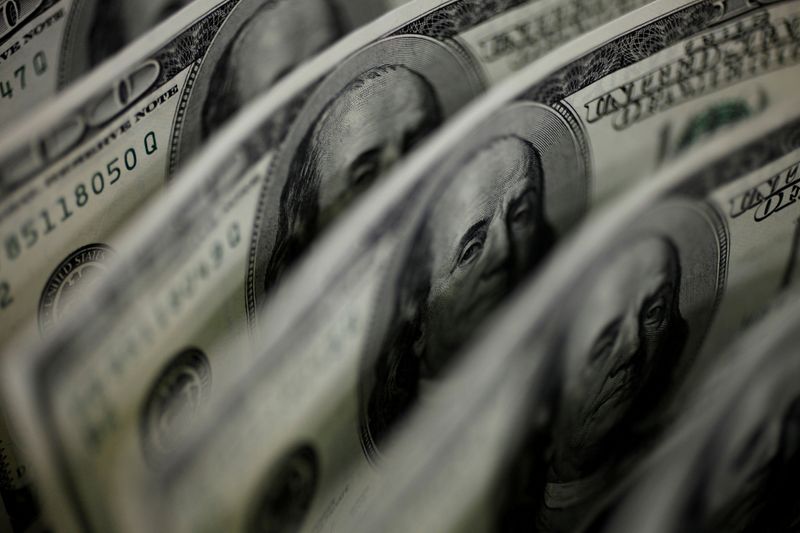By Karen Brettell and Joice Alves
NEW YORK (Reuters) – The dollar briefly hit a nine-month high against the Japanese yen on Monday and dipped against a basket of currencies, as investors waited on key data due later this week and kept an eye out for potential intervention to shore up the struggling Japanese currency.
The greenback hit 146.75 Japanese yen, the highest since Nov. 9, and last traded at 146.51, up 0.05% on the day.
Traders are watching out for any signs of intervention in the currency market from Japanese authorities as the yen weakens.
Analysts at Bank of America noted on Monday that the Federal Reserve’s foreign reverse repurchase facility and U.S. Treasury securities held in custody have fallen by about $18 billion since August 9, which “may reflect modest intervention activity.”
Bank of Japan Governor Kazuo Ueda said on Saturday that the bank will maintain the current approach to monetary policy, as underlying inflation in Japan remains “a bit below” its 2% target.
The greenback has gained in recent weeks from expectations that the Fed will hold rates higher for longer as the economy remains resilient.
Investors also raised bets that the U.S. central bank could hike rates again this year after Fed Chairman Jerome Powell said on Friday that further rate increases may be needed to cool still-too-high inflation, while also promising to move with care at upcoming meetings.
Markets see an 79% chance of the Fed standing pat next month, according to the CME Group’s (NASDAQ:CME) FedWatch tool, but the probability of a 25 or 50 basis point hike in November is now at 62%, versus 43% a week earlier.
The dollar index, which measures the U.S. currency against six others, was down 0.12% at 104.03, after hitting its highest since early June on Friday at 104.44.
Moves on Monday were relatively small before highly anticipated data this week that includes European inflation and U.S. personal consumption expenditures data on Thursday, and the U.S. jobs report for August on Friday.
The euro has weakened against the greenback for the past month due to the diverging economic outlooks for each region.
“Europe is stagnating,” said Marc Chandler, chief market strategist at Bannockburn Global Forex in New York, adding that not only is the European Central Bank talking about tightening monetary policy further, government budgets for the next year also look like they are going to be cut.
The single currency was last at $1.0811, up 0.16% on the day, after falling to $1.07655 on Friday, the lowest since June 13.
China’s yuan steadied against the dollar, buoyed by the Chinese central bank persistently setting stronger-than-expected daily-mid-points. The spot yuan was roughly flat at 7.2900 per dollar.
The China-sensitive Australian dollar rose 0.32% to $0.6423, having taken a beating this month as worries over China’s sputtering post-pandemic recovery weighed on sentiment.
“Market confidence will unlikely improve much until there are signs of China’s weakening economic momentum turning around,” said Tommy Wu, senior economist at Commerzbank (ETR:CBKG).
China halved the stamp duty on stock trading effective Monday in the latest attempt to boost the struggling market as a recovery sputters in the world’s second-biggest economy.



